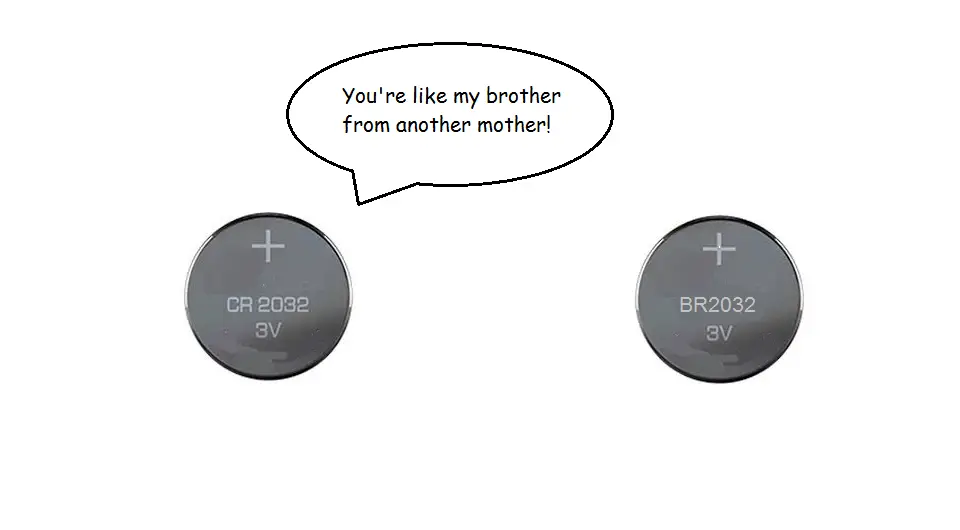Batteries come in a range of sizes to power a variety of electronic devices from the small, to the large. Coin cell batteries are a type of battery used to power small electronics such as car key fobs, digital thermometers, toys, mini flashlights and more. A CR2032 and BR2032 are a range of coin cell batteries that are the most commonly used in these devices.
Can a CR2032 be used instead of a BR2032?
Yes, you can use a CR2032 instead of a BR2032 as they share the same height, diameter and voltage. This means that you are able to substitute one for the other. However, there are other characteristics of the batteries that do not match up and should be taken into consideration if you are worried about the overall performance when using a CR2032 instead of a BR2032.
Is it good practice to use a CR2032 instead of a BR2032?
We just learnt that you can use a CR2032 instead of a BR2032. But, is it good practice to replace a BR2032 with CR2032? Let’s take a look.
When it comes to batteries, there are three main specifications that need to be met when replacing one with the other. These three specifications are the size, shape and voltage. When replacing batteries from different manufacturers you need to ensure that their size, shape and voltage match. In the case of the CR2032 and BR2032, they are the same across these three specifications which means one can replace the other.
Each has a height of 3.2mm, diameter of 20mm, and voltage of 3V.
However, if we are worried about the performance of the batteries, there are other specifications of batteries that come into play. These include; capacity, operating temperature, discharge rate, shelf life and chemical composition.
When we put the BR2032 and CR2032 head to head with these specifications they do not match up, and as we will learn later, this can be a deciding factor when it comes to using a CR2032 instead of a BR2032.
Below is a table highlighting the key difference of the aforementioned specifications.
| BR2032 | CR2032 | |
| Capacity | 200 mAh | 220 mAh |
| Operating temperature | 80°C | 70°C |
| Self – Discharge rate | Less than 0.3% per year | 2% or lower per year |
| Chemical composition | Lithium Carbon Monofluoride (LiCF) | Lithium |
We can see that the CR2032 has a higher capacity which tells us it will be able to power a device for a little bit longer. However, the BR2032 wins the battle when it comes to self-discharge rate and operating temperature.
Even when a battery is not connected, internal chemical reactions within the battery reduce the stored charge of the battery (its capacity will diminish over time). This is known as self-discharge. This is an important parameter as a battery with high discharge rates reduces the overall shelf life of a battery.
Conclusion: So can you use a CR2032 instead of a BR2032?
If we aren’t concerned about the overall performance of the battery, a CR2032 can be used instead of a BR2032. But, when it comes to performance, we need to look more closely at the batteries and other crucial specifications. One of the main being the self-discharge rate.
The BR2032 has a much lower discharge rate compared to the CR2032 which means that it is going to have a longer shelf life. This is crucial as you want to have a battery that stands the test of time (especially if it is not being used often). The BR2032 can also operate in higher temperatures.
So, it depends on your needs. If performance is not an issue, a CR2032 can replace a BR2032, but if you are wanting a battery that lasts longer, and can withstand higher temperatures, stick with the BR2032.





